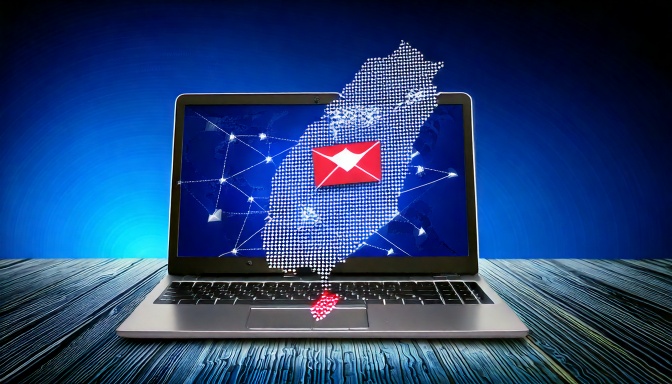
A recent cyberattack has targeted Taiwanese companies using phishing emails which appear to be from Taiwan’s National Taxation Bureau.
In this attack, cybercriminals sent phishing emails to businesses in Taiwan, pretending to be officials from the National Taxation Bureau. These emails contained malicious attachments designed to infect victims’ computers with malware. The threat actors’ aim was to steal sensitive information and gain unauthorized access to IT infrastructures, enabling the attackers to have easy access to secure data.
How Did the Winos Attack Unfold?
The threat actors created emails which, at a quick glance, appeared official and claimed to provide a list of companies scheduled for tax inspections. The recipients were urged to download a zip file containing this list. However, contained within this ZIP file was a dangerous DLL file named lastbld2Base.dll. Once this file was activated, it set in motion a series of malicious actions – the most prominent of which was to download the Winos 4.0 malware. Winos 4.0 allowed the threat actors to take screenshots, record keystrokes, and remotely execute commands on the infected devices.
Once installed, Winos 4.0 gave the attackers deep access to the compromised systems. This access made the malware a powerful tool for carrying out espionage, especially given that the main targets appeared to be corporate businesses. These types of targets allowed the threat actors to gain access to huge amounts of personal data, rather than targeting individuals one at a time to harvest such data.
Security researchers believe that a hacking group known as Silver Fox are the perpetrators behind the attack. Silver Fox has a history of targeting Chinese-speaking users and has previously been observed using fake software installers and malicious game optimization apps to deceive victims.
Protecting Yourself from Such Attacks
This incident is further evidence that phishing campaigns are becoming more deceptive and underlining the importance of social engineering tactics for hackers. Many people glance over their emails quickly and, if they see an official and trusted government logo, the chances are that they’ll believe it’s genuine. However, it’s important that you and your employees stay safe, so make sure you practice the following:
- Be Careful with Email Attachments: Always double check the authenticity of and email before downloading or opening email attachments, especially if they are unexpected or urge you to perform a specific action. If an email claims, for example, to be from a government agency, visit the official website to confirm its legitimacy before opening any attachments.
- Keep Software Updated: Regularly updating your operating system and security software is crucial for protecting your PCs against known vulnerabilities. Many cyberattacks take advantage of outdated software with numerous vulnerabilities, so keeping your system up to date should be a priority at all times.
- Educate Employees: Ensuring that your staff can recognize phishing attempts is crucial in 2025, as is carrying out safe email practices to prevent accidental exposure to malware or malicious links. Implementing cybersecurity awareness programs should be a priority for your IT inductions. Regular refresher courses should also be to help consolidate this learning.
For more ways to secure and optimize your business technology, contact your local IT professionals.
Read More












